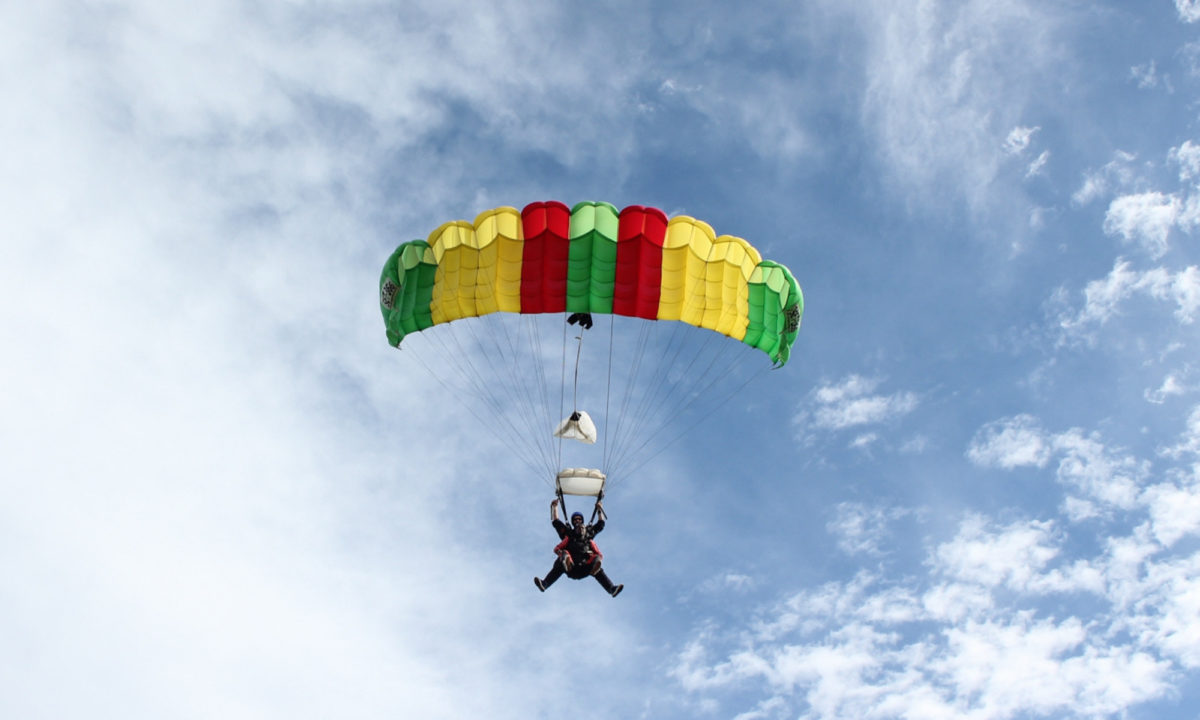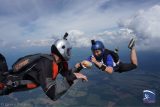How Do Parachutes Open?
Skydiving
8 months ago
Understanding How Parachutes Open
Skydiving is a thrilling adventure that combines the rush of freefall with the serenity of a parachute ride. The intricate details of how a parachute opens might seem like a mystery, and that’s what we’re here for! What do you pull to open a parachute? How do parachutes open after being packed in a teeny-tiny bag? Hang tight and keep reading to find out!

How Do Parachutes Open Up? The Art of Packing
How do parachutes work? Well … they work best when they’re properly packed! Packing the parachute, also called the canopy, is a critical step in any skydive. This process involves meticulously folding the canopy, stowing the lines, and then (finally) securing everything in the deployment bag – also called the d-bag (not to be mistaken for your best friend’s ex, ha!). Attention to detail during a pack job can be the difference between a smooth, buttery opening, and a potential malfunction.
Who can pack parachutes? Main parachutes can be packed by:
- A rigger certified by the Federal Aviation Administration (FAA)
- A person under the direct supervision of a rigger
- The person who will be using the parachute on the next jump
Reserve parachutes are a bit different and can only be packed by FAA-certified riggers. Reserves must be inspected and repacked every 180 days. And before you ask, yes, every modern-day skydiving rig has two parachutes – a main and reserve!
Does the Parachute Open Automatically? The Deployment Sequence
The deployment of a parachute is an orchestrated process, and it doesn’t all happen at once, but it does happen in a matter of seconds. Here’s a pretty detailed breakdown – nerd out with us a minute!
1. The skydiver throws the pilot chute
The pilot chute is a parachute deployment mechanism that is located at the bottom of the container (the backpack skydivers wear). When the skydiver reaches their deployment altitude, they grip the hacky attached to the pilot chute and throw the whole thing into the air. The pilot chute looks like a mini parachute (they’re typically the size of a large pizza) that catches air and creates drag.
2. Deployment bag extraction
The pilot chute is attached to the bridle, which houses the closing pin. The closing pin is placed through the closing loop, which keeps the d-bag nice and snug in the container. When the pilot chute snatches air, it pulls the closing pin out of the closing loop and releases the d-bag from the container. The lines connect the skydiver to the canopy and are carefully stowed along with the d-bag. As the d-bag extends behind the skydiver, the lines begin to unstow and stretch out in a sequence.
3. Canopy Inflation
Lastly, the canopy is exposed to air, the lines become taut, and the canopy begins to inflate. The first piece to catch air is called the slider. The slider is a rectangular piece of fabric with four grommets. These grommets descend the lines and ensure a controlled inflation. Sliders halt the opening shock and allow us to have soft openings! The canopy then fully inflates and is ready for action – let’s look into how this works and how parachutes can fly so precisely.

What Keeps a Parachute Open? Aerodynamics in Action!
First things first: Vocabulary!
- Nose: The front of the parachute
- Tail: The back of the parachute
- Ribs: Fabric panels that run spanwise – from the nose to the tail
- Cells: Formed by the ribs
- Cross ports: Openings on the ribs that connect the cells
The top skin and the bottom skin are large pieces of fabric that make up the majority of a parachute. These are sewn together with the ribs, and also at the tail of the canopy. This means that the nose is left totally open, ready to breathe in the air. Upon inflation, the nose takes in the rush of air and the crossports (located on the ribs about halfway between the nose and the tail) allow that air to inflate the rest of the canopy.
The airfoil shape of the canopy creates lift, stabilizes the canopy during the descent, and allows the skydiver to precisely fly through the sky! The unique design of parachutes ensures maneuverability and allows jumpers to partake in various canopy piloting disciplines, like accuracy and speed.
How Many Parachutes Fail to Open? Addressing Safety Concerns
Skydiving is an adventurous activity that holds inherent risk. Thanks to rigorous safety standards, an awesome community and safety culture, and technological advancements, we’re able to make millions of skydives every year.
According to the United States Parachute Association (USPA) there were around 3.65 million jumps made in 2023, and out of these only 4,913 reported needing to use their reserve parachute – that’s about 0.13%. And, although main parachute malfunctions do happen, it is so rare that a parachute totally fails to open that it is nearly hypothetical.
Parachutes have one job, and one job only, and that’s to open! Humans are human, and we make mistakes, which is why painstakingly thorough processes are key to successful skydives. Through attentive packing and diligent gear checks, skydivers significantly decrease the chances of a malfunction.
Want to see a parachute open right before your eyes? Book with us today! Blue skies!




